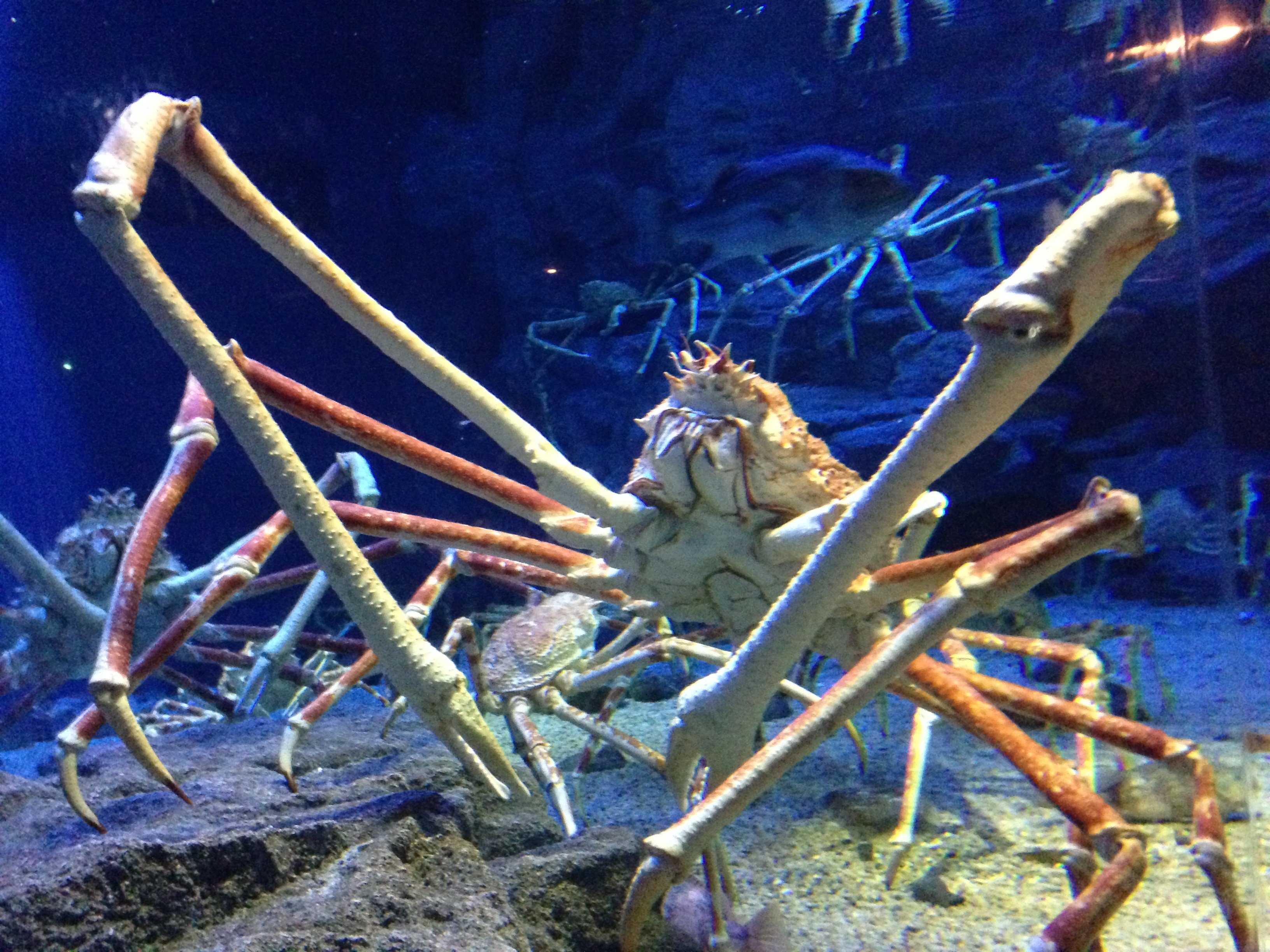Have you ever wondered what the largest arthropod on Earth looks like and how it measures up against something familiar, like a human? Prepare to be amazed by the Japanese Spider Crab (Macrocheira kaempferi), a creature of truly colossal proportions. This deep-sea dweller isn’t just big; it’s record-breaking, and understanding its size in comparison to a human really puts its enormity into perspective.
Adult Japanese Spider Crab (Macrocheira kaempferi) in an aquarium, showcasing its impressive leg span and size relative to its environment.
Size Unveiled: Japanese Spider Crab vs. Human Dimensions
When we talk about size, the Japanese Spider Crab is in a league of its own among arthropods. Imagine a crab with a leg span stretching up to 3.8 meters (12 feet) – that’s about the length of a small car, and significantly taller than most humans when fully extended! While their body, or carapace, is considerably smaller, reaching about 40 cm (16 inches) in width, it’s the incredible length of their legs that truly defines their gigantic size. In terms of weight, these crabs can reach up to 19 kg (42 lbs). While this weight might be less than you’d expect for such a large creature, it’s still substantial. When you picture a human standing next to a Japanese Spider Crab, the crab’s leg span could easily dwarf an adult human’s height, making it a truly awe-inspiring comparison of size in the natural world. Males also tend to grow slightly larger than females, further emphasizing the impressive scale of this species.
Size comparison of a Japanese Spider Crab against various animals including a human, visually illustrating the massive scale of this arthropod.
Habitat and Lifestyle in the Deep Sea
These giant crabs are native to the waters around Japan, primarily inhabiting the Pacific Ocean around the southern coasts of Honshu Island. They prefer deep-sea environments, typically found at depths of 150 to 300 meters (500 to 1000 feet), and have even been recorded as deep as 600 meters (2000 feet). Interestingly, despite their deep-sea habitat, Japanese Spider Crabs undertake migrations to shallower waters, around 50 meters (160 feet) deep, during the spring breeding season. After fertilization, females carry the eggs until they hatch, releasing planktonic larvae that drift towards the surface as they develop and mature, eventually returning to the deeper ocean floor.
Diet and Gentle Nature: Dispelling Myths
Despite their intimidating size, Japanese Spider Crabs are not predators of humans or large creatures. They are omnivorous scavengers, with a diet consisting of molluscs, algae, and other small sea creatures they find on the ocean floor. Contrary to any frightening images their size might conjure, they are considered to be gentle giants. Those who have worked closely with these crabs often describe them as curious and docile. In their natural deep-sea habitat, encounters with humans are extremely rare. Even if a meeting were to occur, their diet and temperament indicate they pose no threat, further emphasizing that their enormous size is more a spectacle of nature than a cause for concern.
Conservation and Human Interaction
While not a primary target for large-scale commercial fishing, Japanese Spider Crabs are considered a delicacy in some regions, leading to some fishing activities. Their migration to shallower waters for breeding makes them particularly vulnerable to overfishing during this critical period. Recognizing population declines and a decrease in the average size of captured crabs, the Japanese government has implemented seasonal fishing bans during the spring to protect these magnificent creatures during their breeding season, highlighting the importance of conservation efforts for this gentle giant of the deep.
